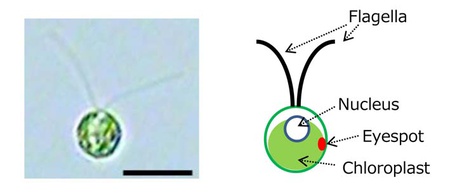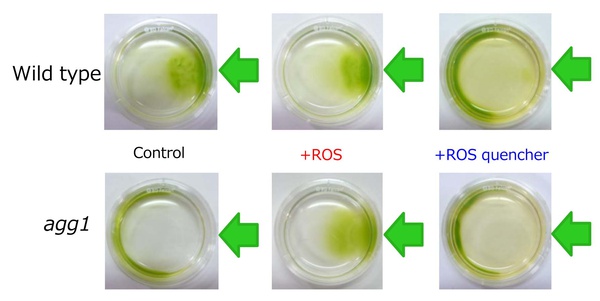A critical factor that determines the direction of phototaxis in unicellular green algae.
Flagellated unicellular green algae swim toward the light source (positive phototaxis) or away from it (negative phototaxis). By switching between the opposite swimming patterns, the cells can accumulate under appropriate light conditions. However, no intracellular factor has been identified that determines the sign of phototaxis. Recently, cytoplasmic oxidation-reduction (redox) state has been shown to be important for the regulation of various physiological functions in various types of cells. In this study, we found that the cytoplasmic redox state determines the sign of phototaxis in Chlamydomonas. For example, the cells display positive phototaxis when the cytoplasm is made oxidative by the treatment with active oxygen (e.g., H2O2), whereas they display negative phototaxis when the cytoplasm is made reductive by treatment with reagents (e.g., dimethyl thiourea) that reduce active oxygen. This study has therefore identified an intracellular factor that determines the phototactic sign in a green alga, and suggests the possibility that ciliary movements, which are important for humans also, are regulated through modulation of the intracellular redox condition.
Program member
Ritsu Kamiya (Department of Biological Sciences, Graduate School of Science)

Fig. 1. Chlamydomonas, a unicellular green alga, which swims with its two flagella. It receives light signals by the eyespot.

Fig. 2. Phototactic response observed in cell cultures. Cells of wild type (upper photos) and agg1, a mutant known to display negative phototaxis, are illuminated by light from the right side. In either strain, cells display positive phototaxis under oxidative conditions and negative phototaxis under reductive conditions.
